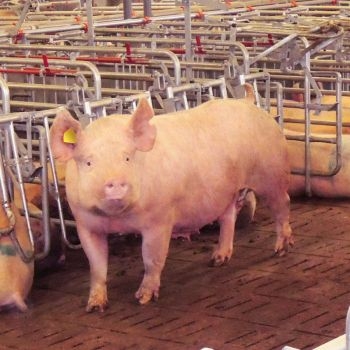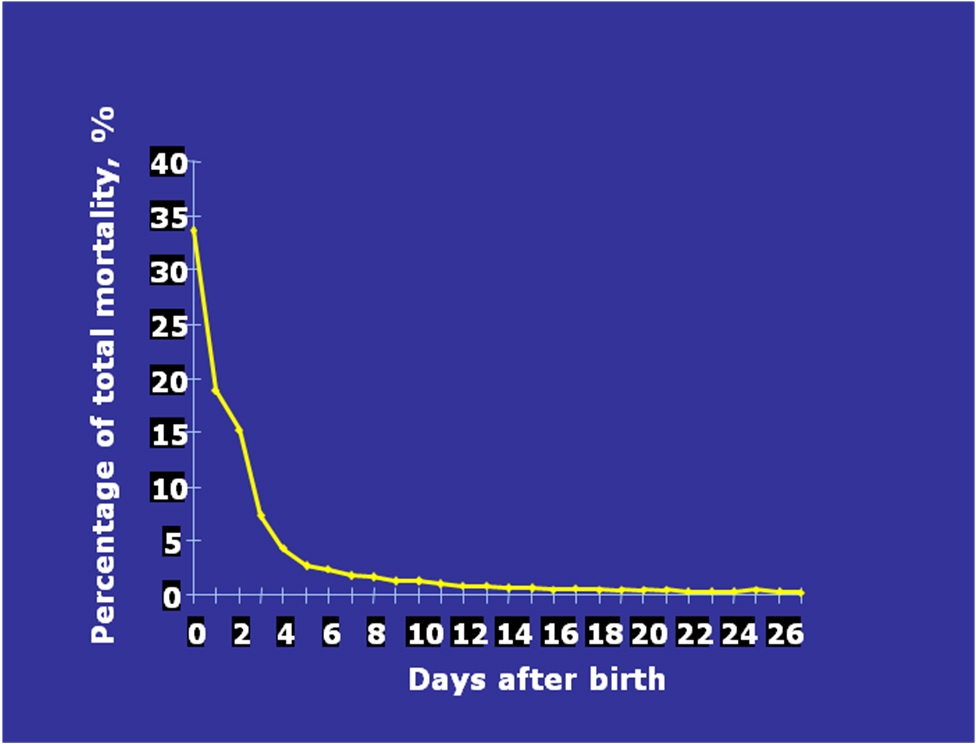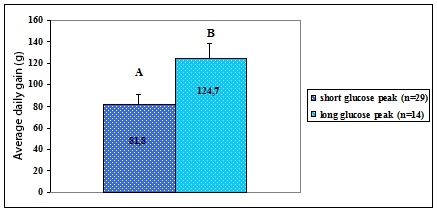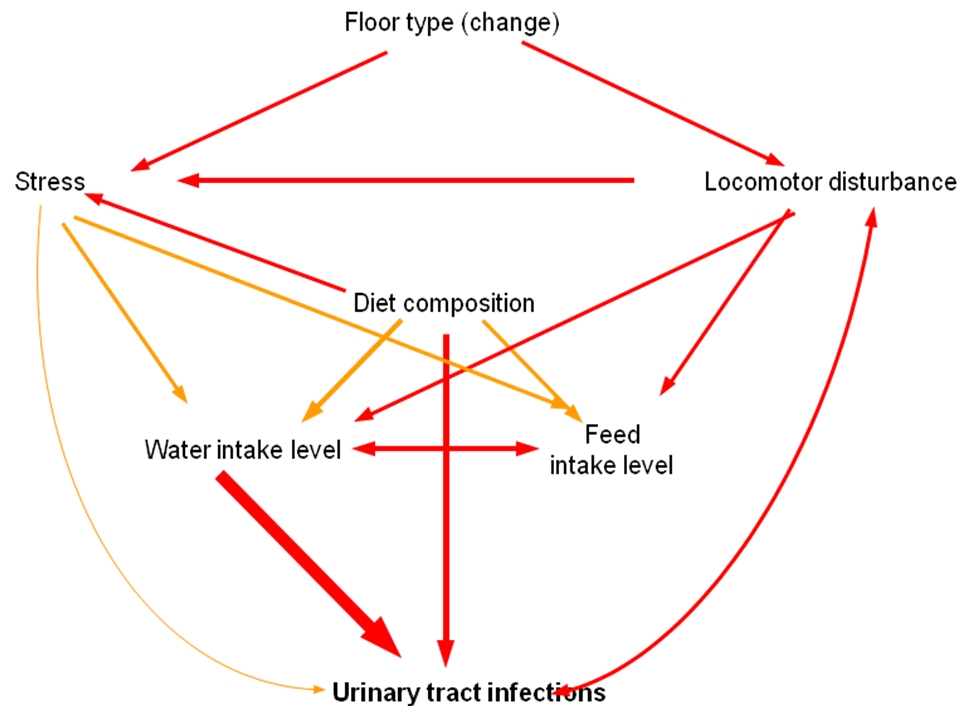
Optimization of Feeding the Transition Sow
Sow peri-parturient hypogalactic syndrome is a general term associated with the sows failure to milk in the early part of lactation. It is characterized by the following symptoms:
- Mastitis, agalactia (MMA syndrome)
- Milk failure 2-4 days after birth (often there is sufficient at farrowing)
- Low (slow) feed intake
- Sows laying on their belly
Piglet neonatal mortality is at its highest during the first 3 days after farrowing and is associated with one or more aspect of in sows.
Risk factors associated with peri-parturient hypogalactic syndrome in sows include constipation around the farrowing period, urinary tract infections and glucose intolerance (diabetes).

Work at the swine research centre and on commercial units has shown high variation between individual sow glucose tolerance and insulin response curves. This can have a large bearing on nutrient supply to the growing foetus.
Gestational diabetes (low glucose tolerance and decreased sensitivity to insulin) results in:
- High blood sugar levels in the sow
- Enhanced supply of nutrients to the placenta
- Higher insulin production by the foetus
- Enhanced supply of nutrients to the foetus
- Heavier piglets at birth
- More glycogen storage in the liver
- More adipose tissue
- Effect on farrowing process
- There is reduced energy uptake by the sows body tissues which can impact on speed of farrowing.
- Effect on the piglets after birth.
- Enhanced risk of hypoglycaemia (low vitality), stillbirth and postnatal mortality

However all this sounds too good to be true....and it is! Inducing diabetes also has negative consequences;
Work by Bas Kemp showed that there is a positive correlation between the height of the sows glucose peak after eating and the risk of piglet mortality during the first 7 days. There is also a negative impact on sow feed intake which is precisely what we aim to avoid during lactation.
Excessive feeding and feeding high starch diets during late gestation is associated with low glucose tolerance and the effects described above. It is well understood that limiting feed intake during this period is critical for ensuring lactation intake. Feeding ketogenic energy sources (fats/oils) rather than glucogenic (starch, sugar) has also shown to be beneficial to early piglet viability.
However it is equally important to maintain feed intake over the transition period to avoid constipation. A sudden drop or withdrawal of feed is often carried out and this can cause serious problems for the sow and piglets.
Constipation can cause a proliferation of E coli in the sows large intestine. The toxins produced by the E coli can reduce the prolactin hormone titer within a few hours. This has a negative impact on milk production.
Sows are particularly sensitive to the effects of endotoxins during early lactation. It is thus essential that feed intake is maintained and that the sow consumes adequate fibre over the transition period to maintain intestinal throughput. When sows are transfered from straw yards to farrowing crates, as is often the case in the UK, they experience a sudden and dramatic drop in fibre intake. This should be considered as part of the feeding strategy. One solution is to supplement the ration once in the farrowing shed with a high fibre supplement to compensate for the withdrawal of straw.
Another source of infection is the sows urinary tract. It has been shown that bacteria can translocate from the urinary tract to the birth canal and uterus during the farrowing process which can result in metritis. This can have a serious impact on the sow, reducing feed intake and milk production. There are several risk factors associated with urinary tract infections – these include;
- Water intake (too restricted)
- Water quality
- Pipelines
- Drinkers
- Management
- Locomotive disorders
- Stress
- Vulva wounds (group housing)
- Fibre to avoid constipation and maintain gut health
- Acids to promote a health gut and urinary tract
- Selected fats (marine origin and medium chain triglycerides) for energy during farrowing and to promote early piglet viability
- Vitamins and trace elements
Water consumption in the farrowing house can be a major problem as often the drinkers provided do not allow the sow to consume the quantity she requires during lactation. Provision of extra water in the feed troughs can be valuable, as can ensuring water quality is optimal. Acidification of the drinking water can be a useful tool in reducing enteric infections in the sow and can have knock on benefits to the piglets via reduced oral-faecal pathogen transfer.

Manipulating the dietary electrolyte balance can also help control urinary tract infections. The sow will respond to a reduction in the dietary electrolyte balance within a few days. There are anionic feed supplements available which are designed to be fed on entry to the farrowing house until a few days after farrowing. They have been successfully proven to reduce urinary pH which has a positive impact on reducing the incidence of urinary tract infections and has also been found to improve early piglet growth.
Feeding strategy for the transition sow
We have developed a feeding concept based on the findings of the above research, designed to help prevent problems associated with peri-parturient hypogalactic syndrome in sows, promote piglet viability and optimise sow performance in early lactation.




